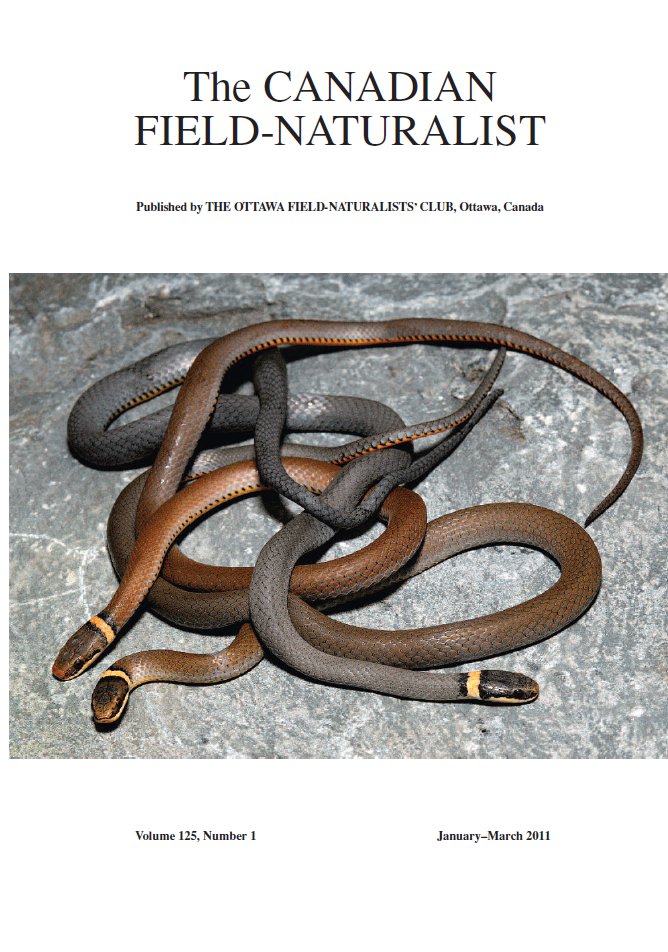Recent Expansion of Spiranthes cernua (Orchidaceae) into Northern Ontario due to Climate Change?
DOI:
https://doi.org/10.22621/cfn.v125i1.1122Keywords:
Spiranthes cernua, Nodding Ladies'-tresses, orchid, range extensions, climate change, Ontario, CanadaAbstract
The expansion northward since 1980 of the native orchid Nodding Ladies'-tresses (Spiranthes cernua) in Ontario is described and assessed with respect to the possibility of the expansion being a recent response to climate change. Based on evidence of the extent of the orchid's distribution from prior botanical surveys, it is considered to be a recent arrival in a previously unoccupied area of northern Ontario. Second-order polynomial regression revealed a significant increase in mean yearly temperature of 1 Celsius degree in parts of northern Ontario since 1980. Based on close association with limits of yearly temperature, this is considered sufficient to explain the expansion, and the individual extensions of range fit well into the anticipated newly available territory. Based on a consideration of the location of extensions with respect to plant hardiness zones, the landscape that has become available since 1980 is 160 000 km2, in a band approximately 200 km wide across the southern part of northern Ontario. Assuming further temperature increases, this band is expected to expand to a width of approximately 300 km by 2040, providing 360 000 km2 of newly available landscape over six decades. Spiranthes cernua produces thousands of seeds per flower by adventitious embryony, allowing single individuals to establish populations through long-distance wind dispersal with no reliance on pollination. Spiranthes cernua is therefore well adapted to quickly colonize new territory that becomes available through climate warming.Downloads
Issue
Section
License
Copyright for Canadian Field-Naturalist content is held by the Ottawa Field-Naturalists' Club, except for content published by employees of federal government departments, in which case the copyright is held by the Crown. In-copyright content available at the Biodiversity Heritage Library is available for re-use under a Creative Commons Attribution-NonCommercial-ShareAlike 4.0 (CC BY-NC-SA 4.0) licence. For usage of content at the BHL for purposes other than those allowed under this licence, contact us.
To request use of copyright material, please contact our editor, Dr. Dwayne Lepitzki: editor -at- canadianfieldnaturalist -dot- ca





